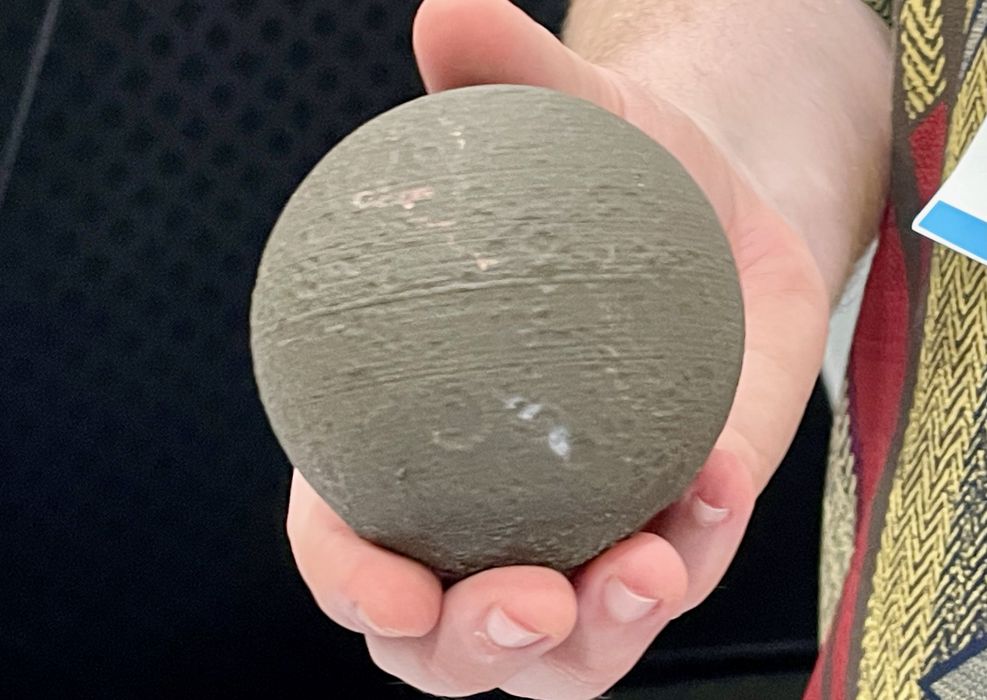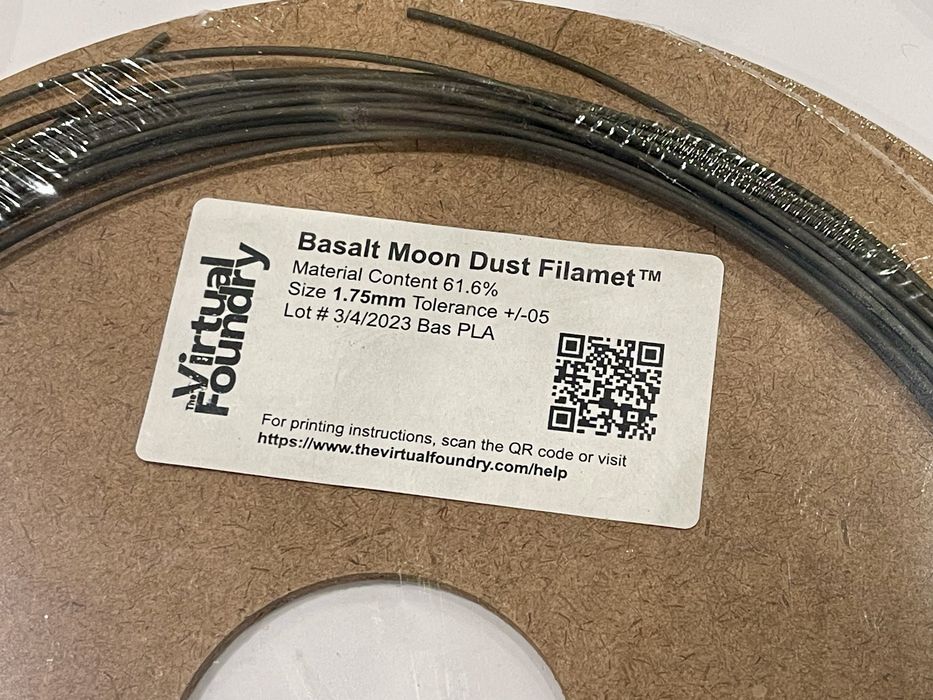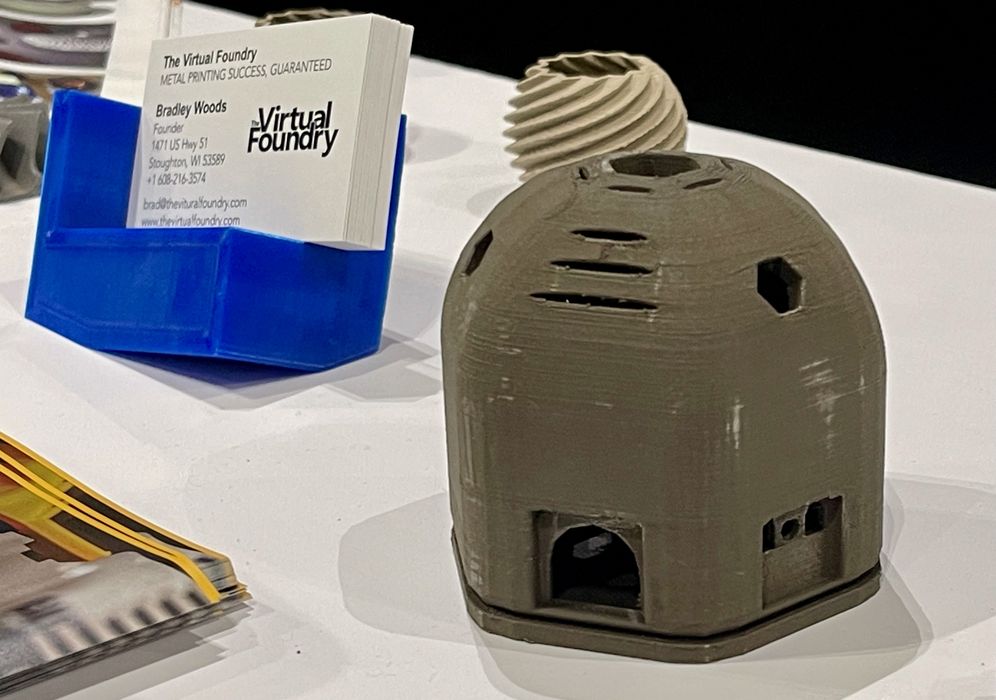
We had an interesting chat with Virtual Foundry about their latest material.
Virtual Foundry is a Wisconsin-based operation that produces metal and ceramic filaments, operating since 2015.
Metal filaments? What’s that about? While most FFF machines print polymers, it is also possible to print metals and even ceramics, if you have the right materials and equipment.
The idea goes like this: fine metal (or ceramic) powder is mixed with a polymer resin, and then formed into a standard 3D printer filament. This filament is then used to 3D print an object in the normal fashion.
The print is then considered a “Green” part: it’s made of both metal (or ceramic) and polymer. The part then undergoes a two-stage process. First, heat (or chemicals) are used to de-polymerize the part, leaving just metal (or ceramic) particles. A second, higher temperature treatment then sinters the particles together to form a complete part without any polymer.
The objects tend to lose a bit of volume during the depolymerization, sometimes around 20%. However, by printing objects a bit larger you can compensate for this shrinkage.
In other words, anyone with a FFF 3D printer (and a sintering oven) can print metal or ceramic objects.
Virtual Foundry produces a wide range of materials under their “Filamet” brand. Options include: Aluminum, Bronze, Copper, High Carbon Iron, Inconel 718, M300 Tool Steel, Stainless Steel 17-4, Stainless Steel 316L, 3DShield Tungsten, Titanium 64-5, Amaco 46-D, Silicon Carbide, Zirconium Silicate.
All of these have specific post processing procedures that must be followed, and Virtual Foundry has all this well documented.
Their latest product, however, is really interesting: Basalt Moon Dust.

This is a ceramic material — basically rock dust — mixed with a polymer. The interesting part is that the rock is actually simulated moon dust.
The Moon’s surface has some dark areas, as you may have noticed. These “seas” are areas of basalt rock, and that’s the material simulated in this filament. It’s browny-grey in appearance, and that’s exactly what the lunar surface would look like, if you happened to visit.

Here you can see an example print using this unusual material, a miniature planetary habit model. Its dusky appearance is quite unique. At top you can see perhaps the most unusual print: a Moon made literally from simulated moon dust!
Before you get too excited, however, note that this is a pricey product. Virtual Foundry lists it as US$556 per 500g of filament. Also note that this filament is far denser than typical PLA, so you get fewer meters of filament per weight.
However, the price is far lower than if it had been made with actual moon dust.
Via Virtual Foundry
